Textile Artist Julie French’s work focuses on the wild side of nature, dance and motion. Each piece is unique.
Using the sewing machine as a tool for continuous line drawing, Julie’s work explores movement and texture with often unpredictable outcomes, which have been likened to ink illustration. The speed and capricious nature of the sewing machine, when used in this unconventional way reflect characteristics of the subjects.
In this article, part of our From conception to creation series, Julie talks us through the creation of her astonishing piece, ‘Kingfisher’. We learn how this magnificent bird captured her heart and imagination and why on discovering banana fibres at the Knitting and Stitching show she was driven into action.
Name of piece: Kingfisher
Year of piece: 2018
Size of piece: 35 x 45cm
Materials used: Black rayon thread on reclaimed furnishing fabric and banana fibres
Techniques used: Free motion stitch
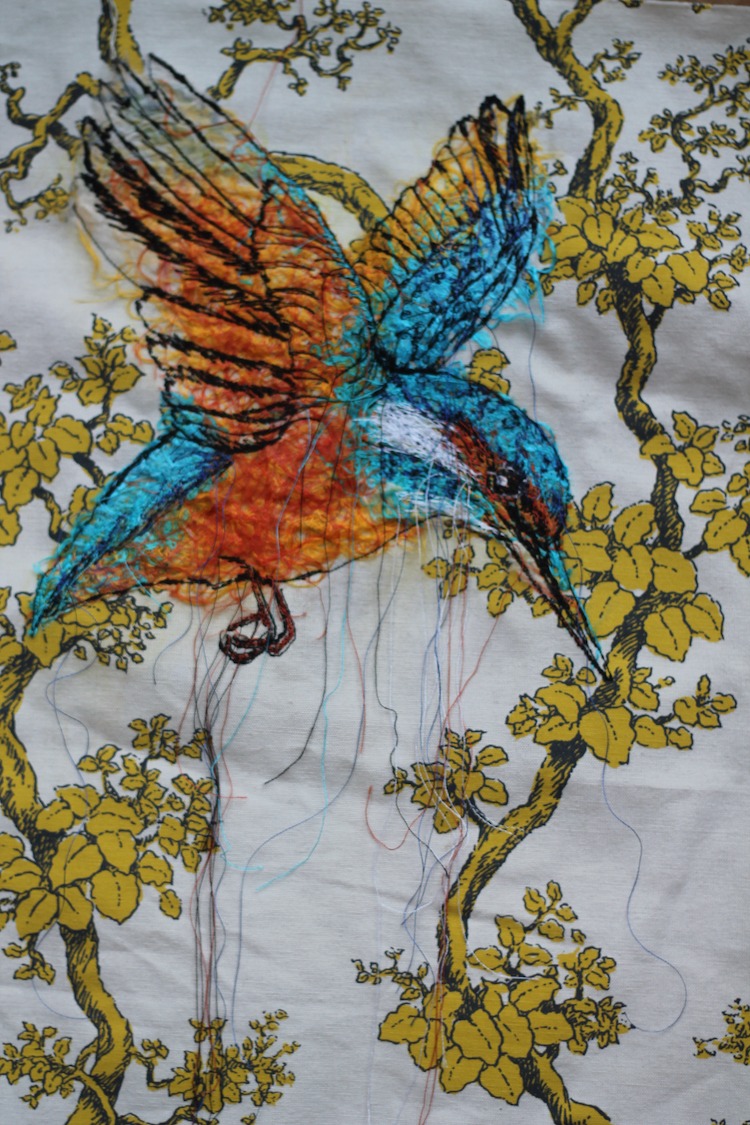
Brief encounter
TextileArtist.org: How did the idea for the piece come about? What was your inspiration?
Julie French: I have always been fascinated with Kingfishers since briefly spotting one with my sister when we were very young. The sighting was so brief I never could really work out if I’d dreamt it up or actually see one. I’ve asked my sister recently, and she assures me we definitely did it!
More recently I’ve been very fortunate to see Kingfishers in India, there is something still very magical about seeing one. I really enjoy the process of stitching birds, and when I decided that I wanted to include more colour in my work, the Kingfisher was a perfect choice.
What research did you do before you started to make?
I have a few photographs I took of Kingfishers on a riverboat trip in Goa. I was so chuffed that I manages to get some, my photos are of the Kingfisher sitting still, but the most magnificent image set in my mind is the flash of iridescent striking blue light the Kingfisher becomes as soon as you spot it!
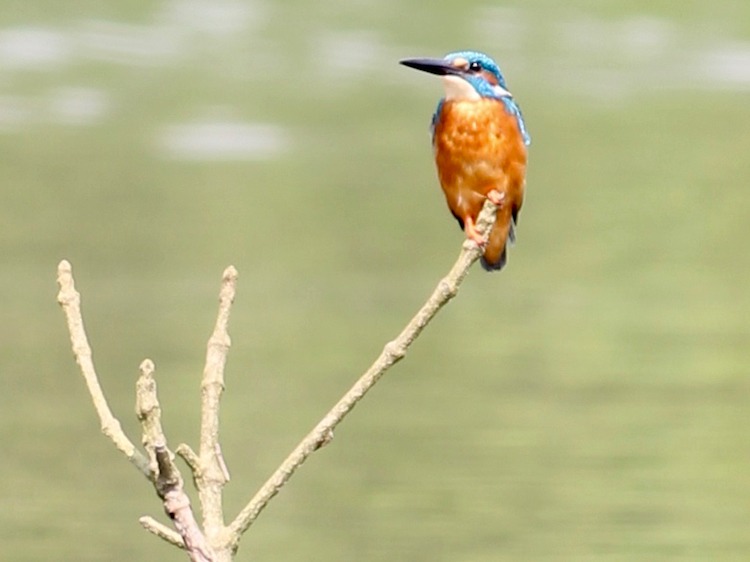
This scatter of colour is apparently caused by the structure of the feathers. As my photographic skills are not up to capturing the swift movement of the Kingfisher, I used with my own photographs along with a selection of images from the Internet to create a drawing of the bird in action.
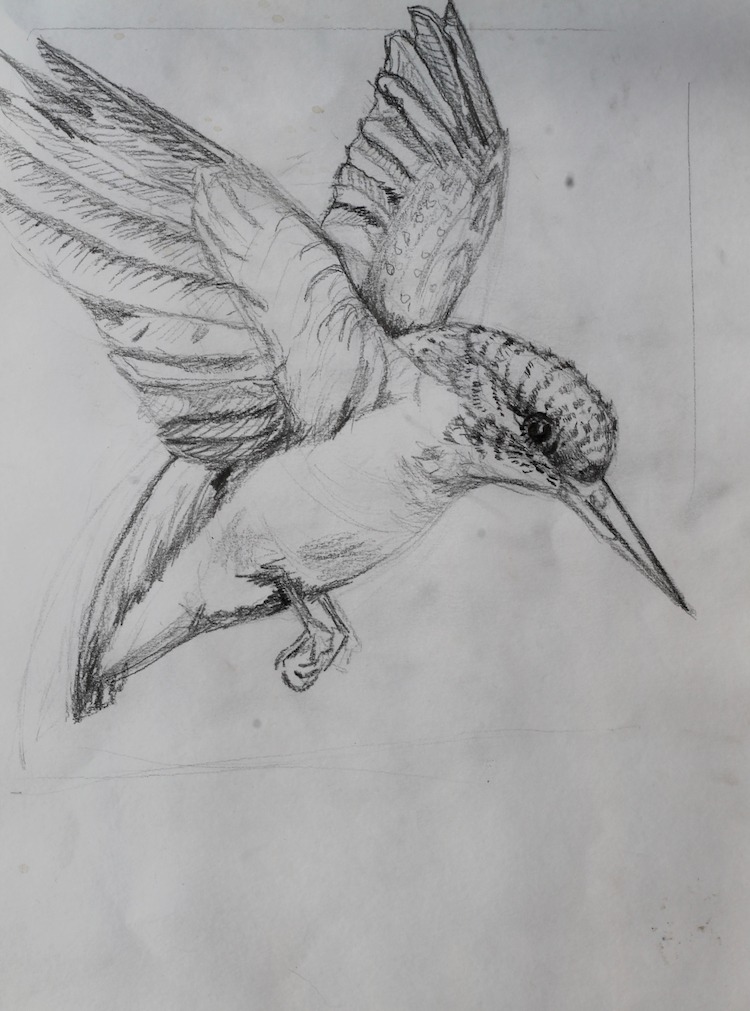
What materials were used in the creation of the piece? How did you select them? Where did you source them?
Most of my fabrics are reclaimed, bought at charity shops, flea markets, boot sales or donated. This particular fabric was found at a flea market in Brighton.
I have stitched the Kingfisher onto a few different backgrounds, this is one of my favourites, and I think the twists vertical branches work well with the loose hanging threads and the yellow accentuates the tiny purple detail on the bird.
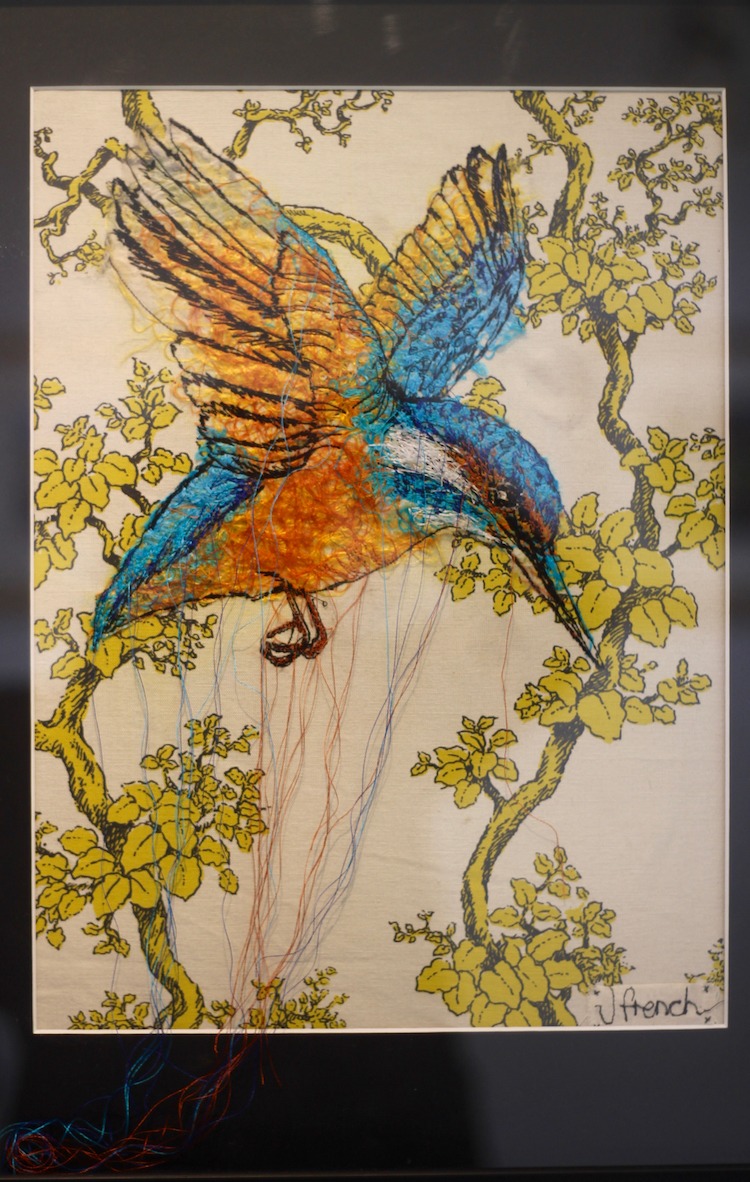
Biodegradable banana fibres
I discovered banana fibres whilst visiting the Knitting and stitching show at Alexander Palace a few years ago. I was enticed by the vibrant colours and instantly knew I wanted to experiment with them.
Although I’d never seen or heard of banana fibres before, apparently people have been making fibres out of banana stems since the early 13th century and the brilliant news is it is a totally biodegradable material.
The banana fibres I found are beautifully silky and brightly coloured. A perfect surface to use for my Kingfisher
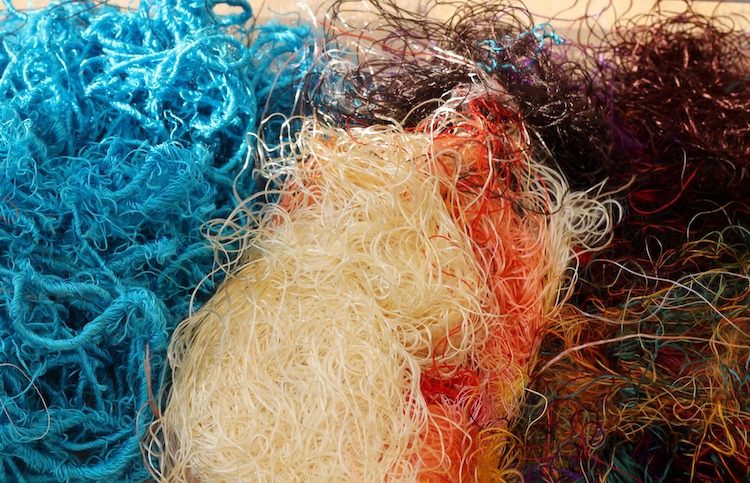
Take us through the creation of the piece stage by stage.
I began by loosely arranging the banana fibres into the shape of the Kingfisher and then trapped them with ‘bondaweb’, allowing some of the fibres to escape to encourage the illusion of movement. This layered surface produces a great embossed texture to stitch on to.
When I shop for embroidery thread I take an image of what I will stitch with me to help me choose my colours, it’s dangerous because I want to buy about four or five shades of each colour, I want to buy all the colours! I spend ages deciding on what reels I have to put back on the shelf.
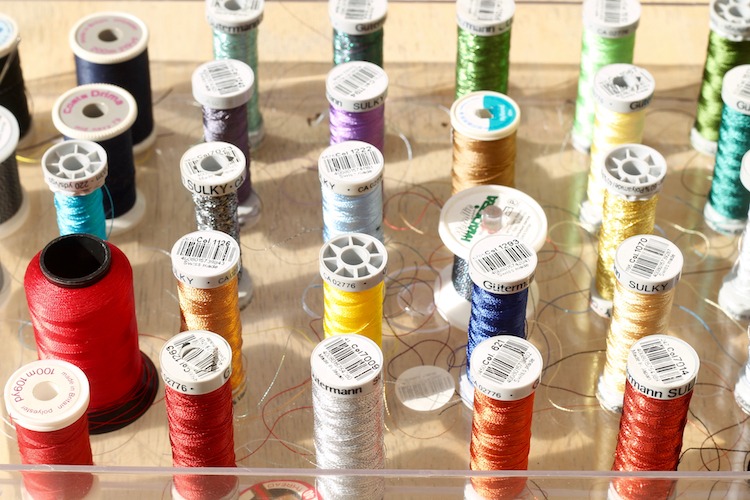
I use the thread, as I would paint, usually starting with mid tones, and then working in the dark and finally highlights. I layer areas, stitching over stitches and the banana fibres not only to produce tonal qualities but to also to guide the stich in different directions to emboss texture.
I always leave threads long and loose, arranged around the subject to give an illusion of movement and with the Kingfisher I decided to use a deep box frame, so instead of the threads being trapped in place behind the frame, the space allows the threads to almost drip and fall from the bird, with them settling at the bottom of the frame.
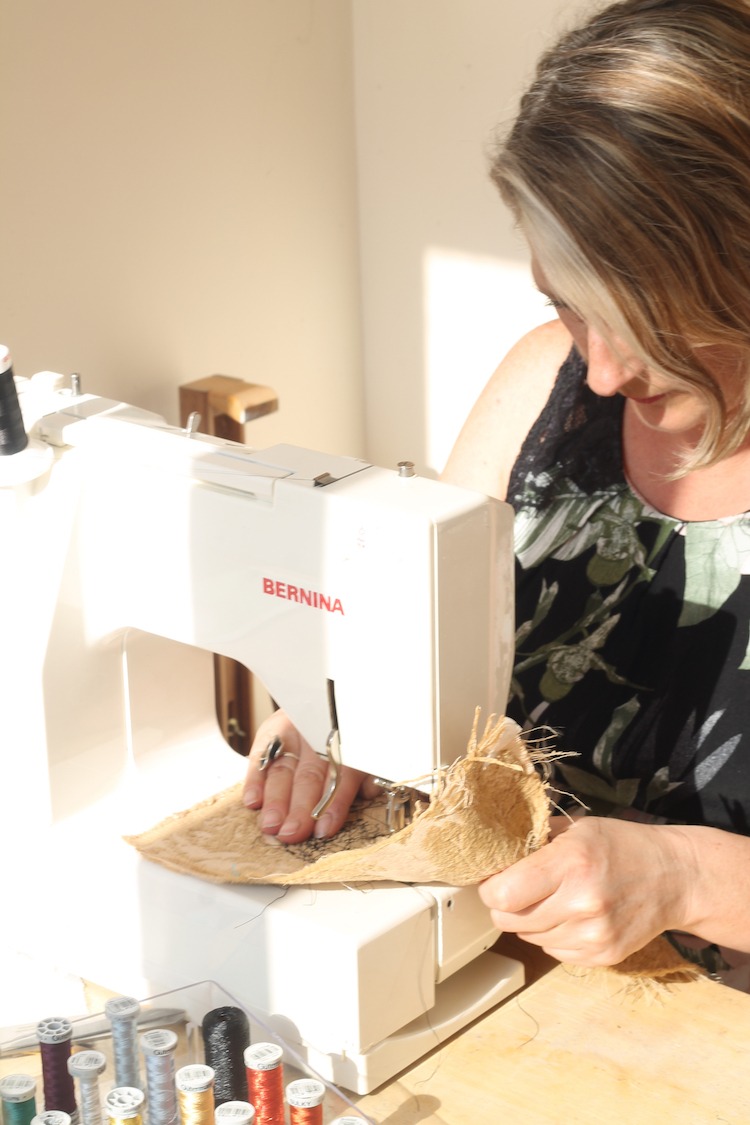
What journey has the piece been on since its creation?
Kingfisher was one of my collection of bird works exhibited at the Daniel Raphael gallery in London as part of the ‘Stitch’ exhibition.
The exhibition included work from contemporary textile artists from around the world, all approaching embroidery in very unique and varied ways I was very honoured to be approached to show my work alongside these artists and very impressed that the gallery owner had taken the risk of giving textile art an equal platform to fine art.
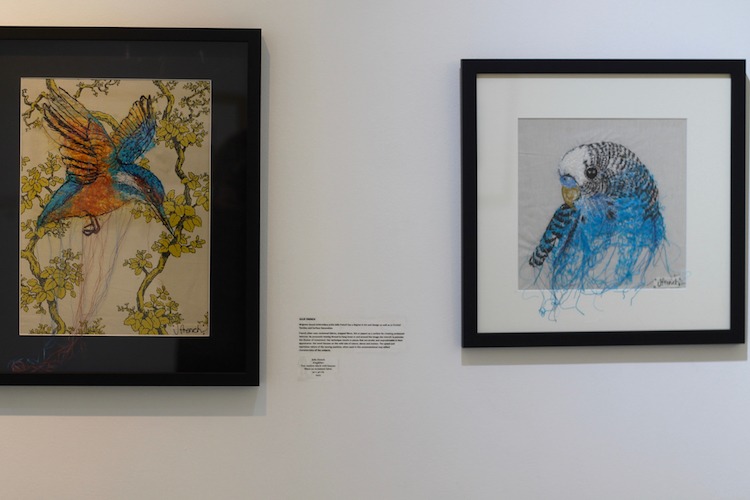
I am very passionate about blurring these boundaries and believe the art world is moving towards this. The exhibition was very popular and a great success for me, all my birds, including the Kingfisher have nested in new homes.
For more information visit: www.juliefrench.artweb.com or follow Julie on Instagram and Facebook.
Let your friends know about this artist’s work by sharing the article on social media. It’s easy – click on the buttons below!
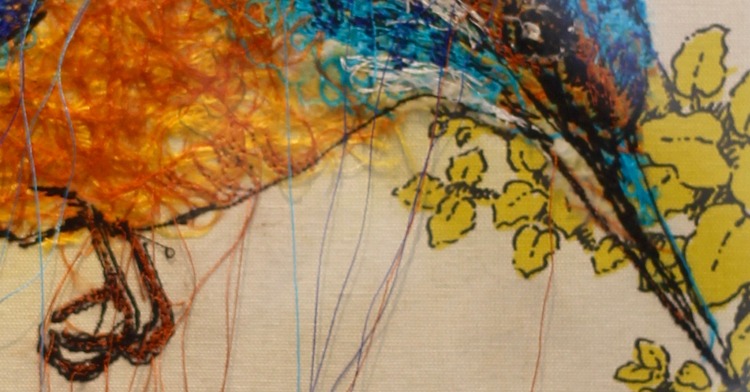
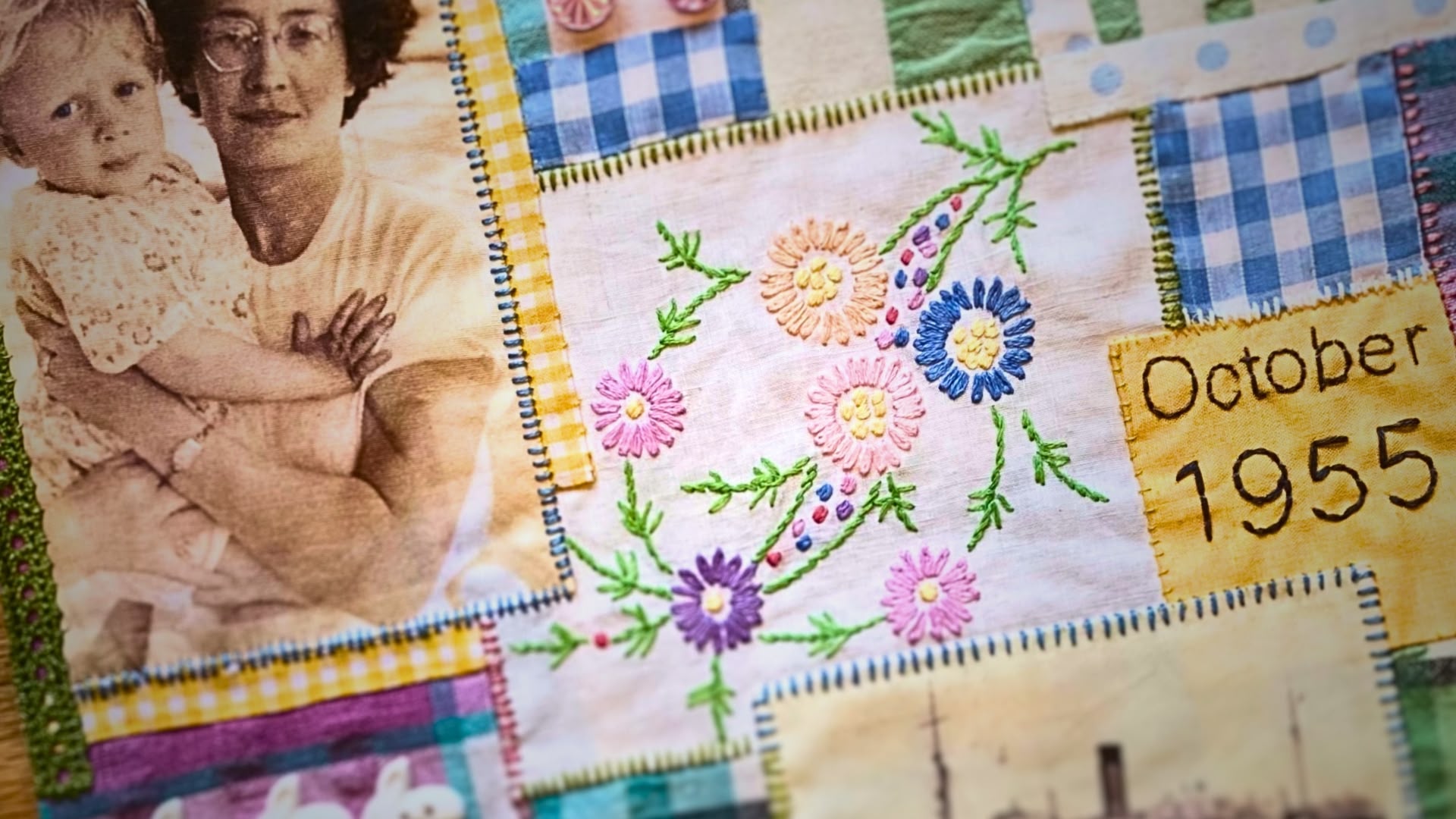
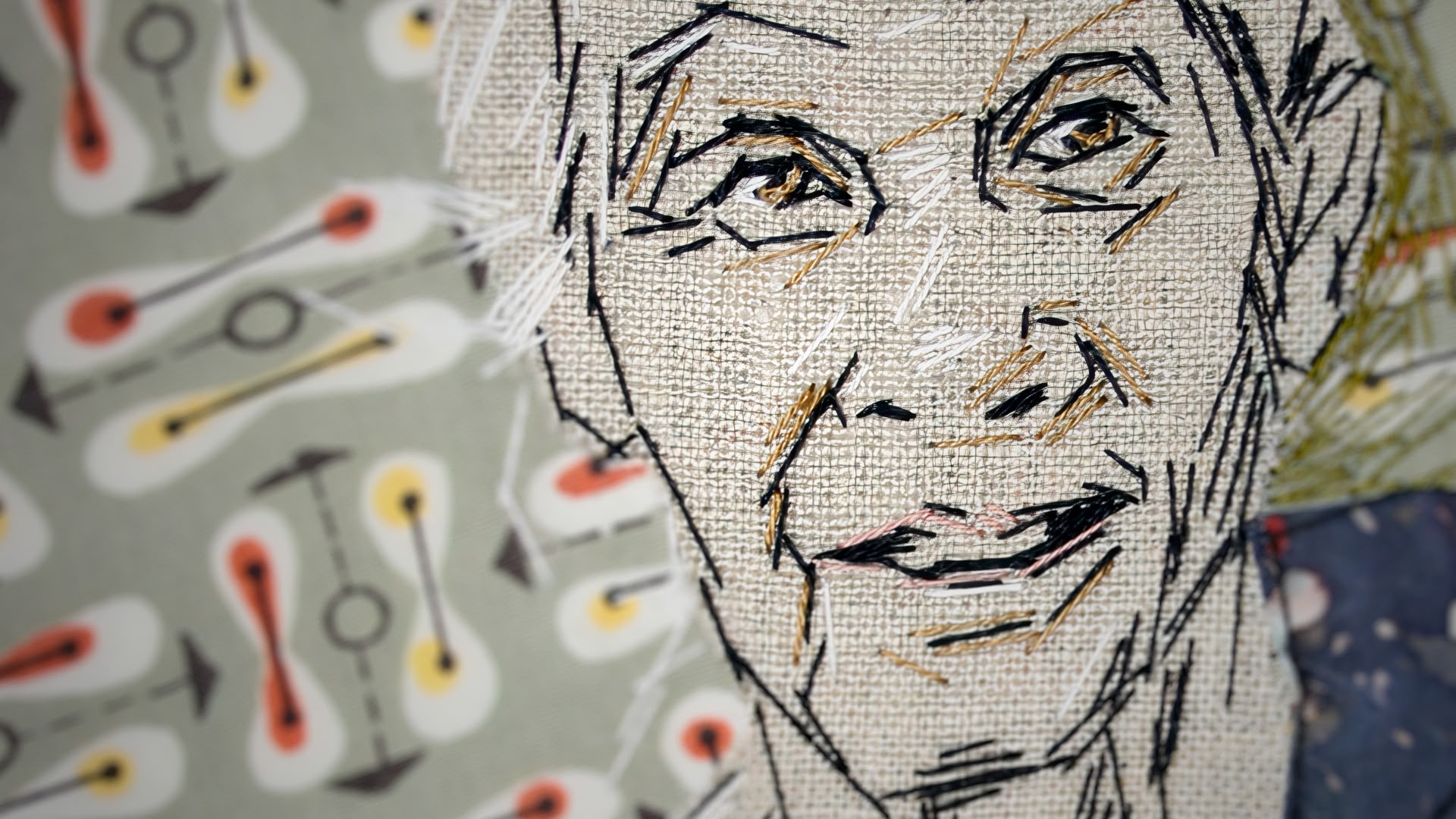
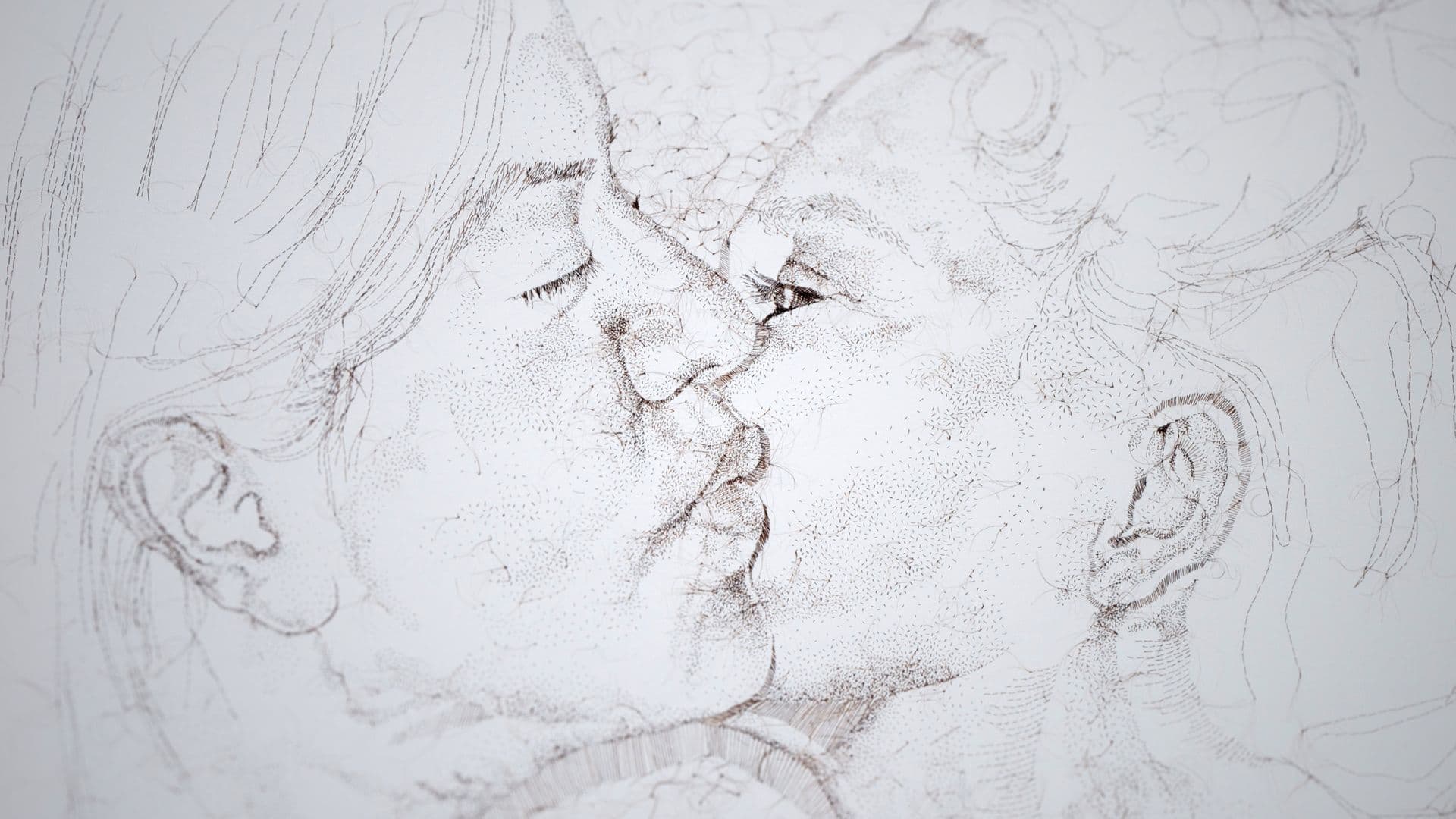
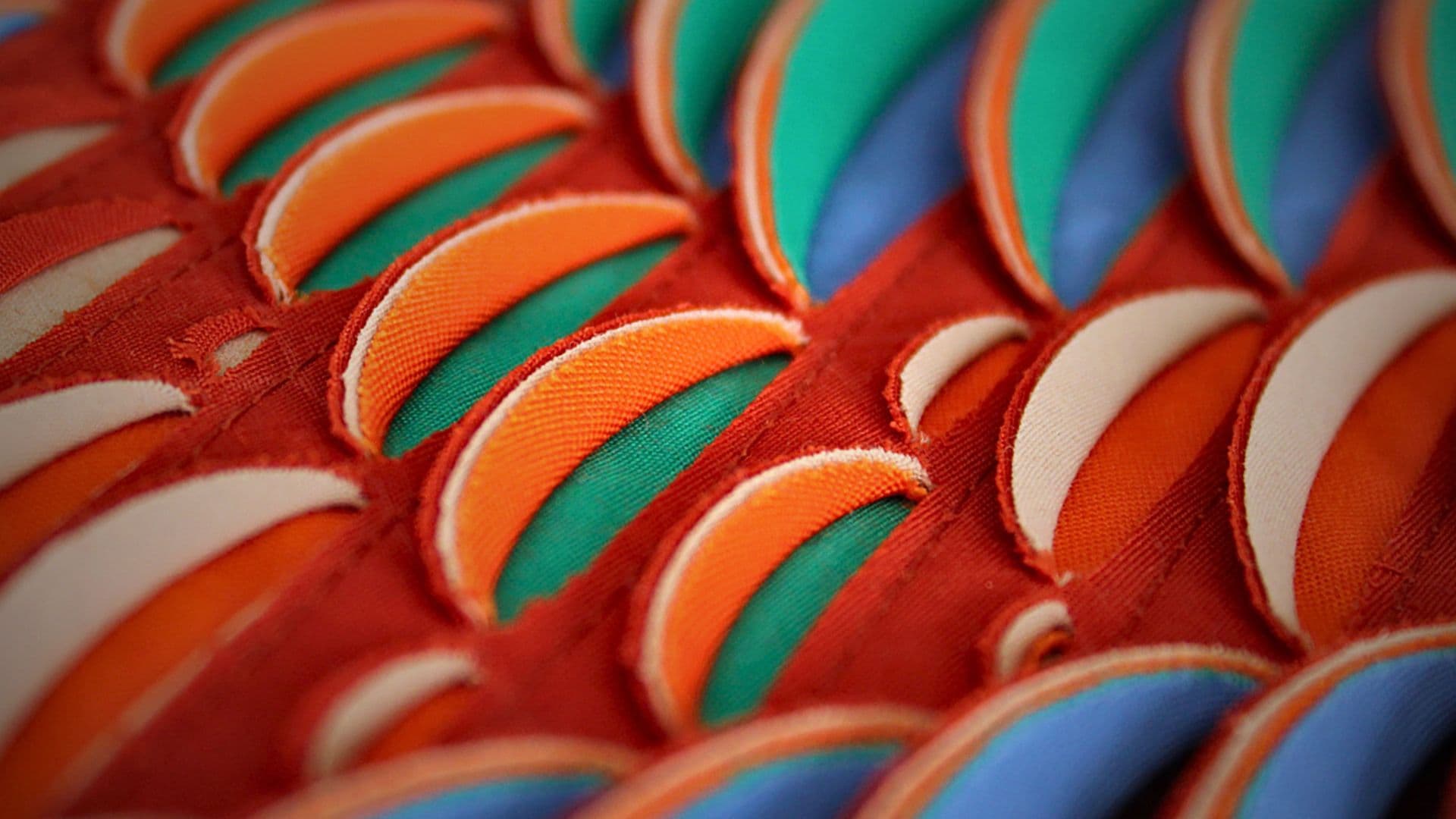

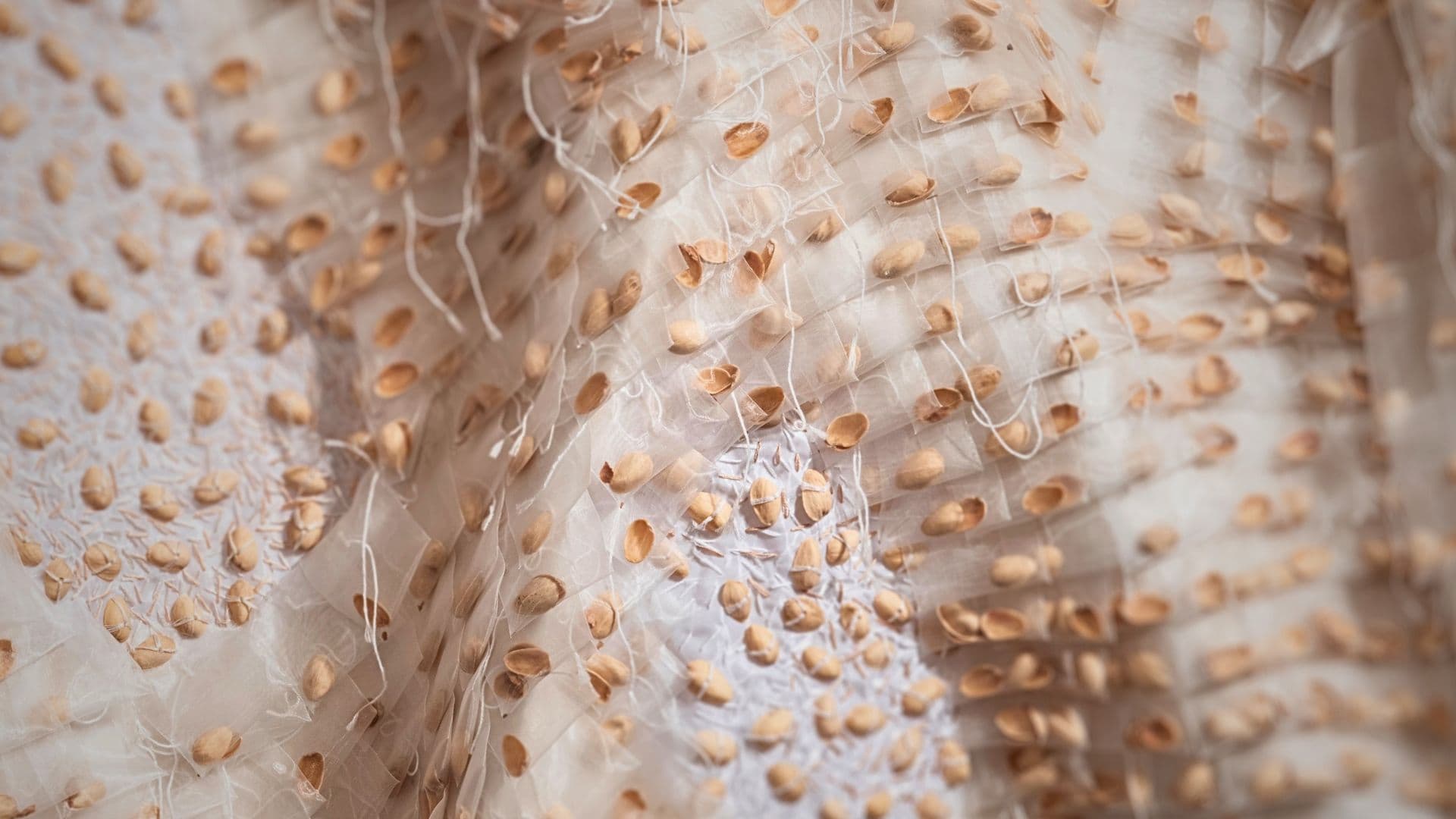
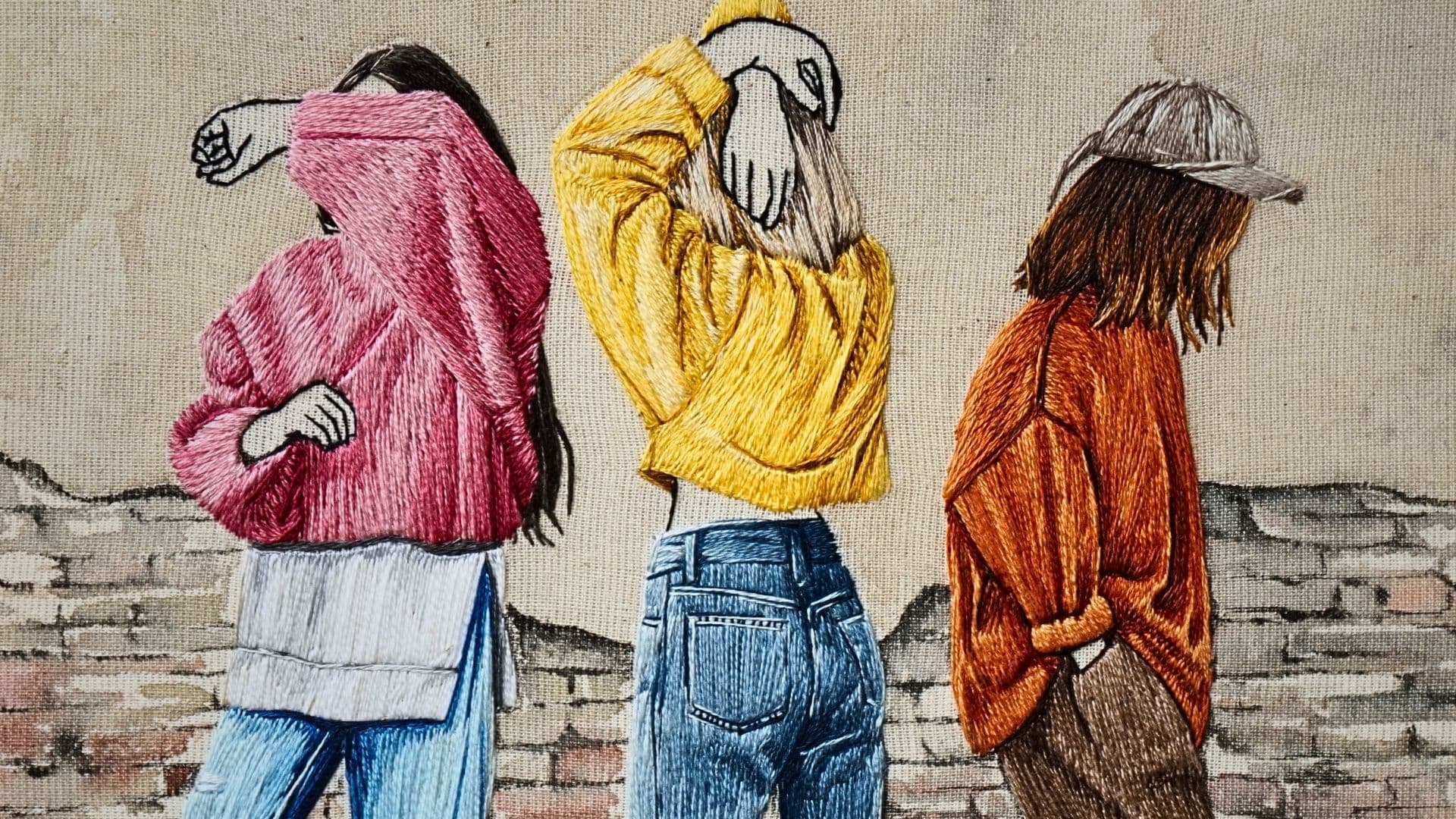
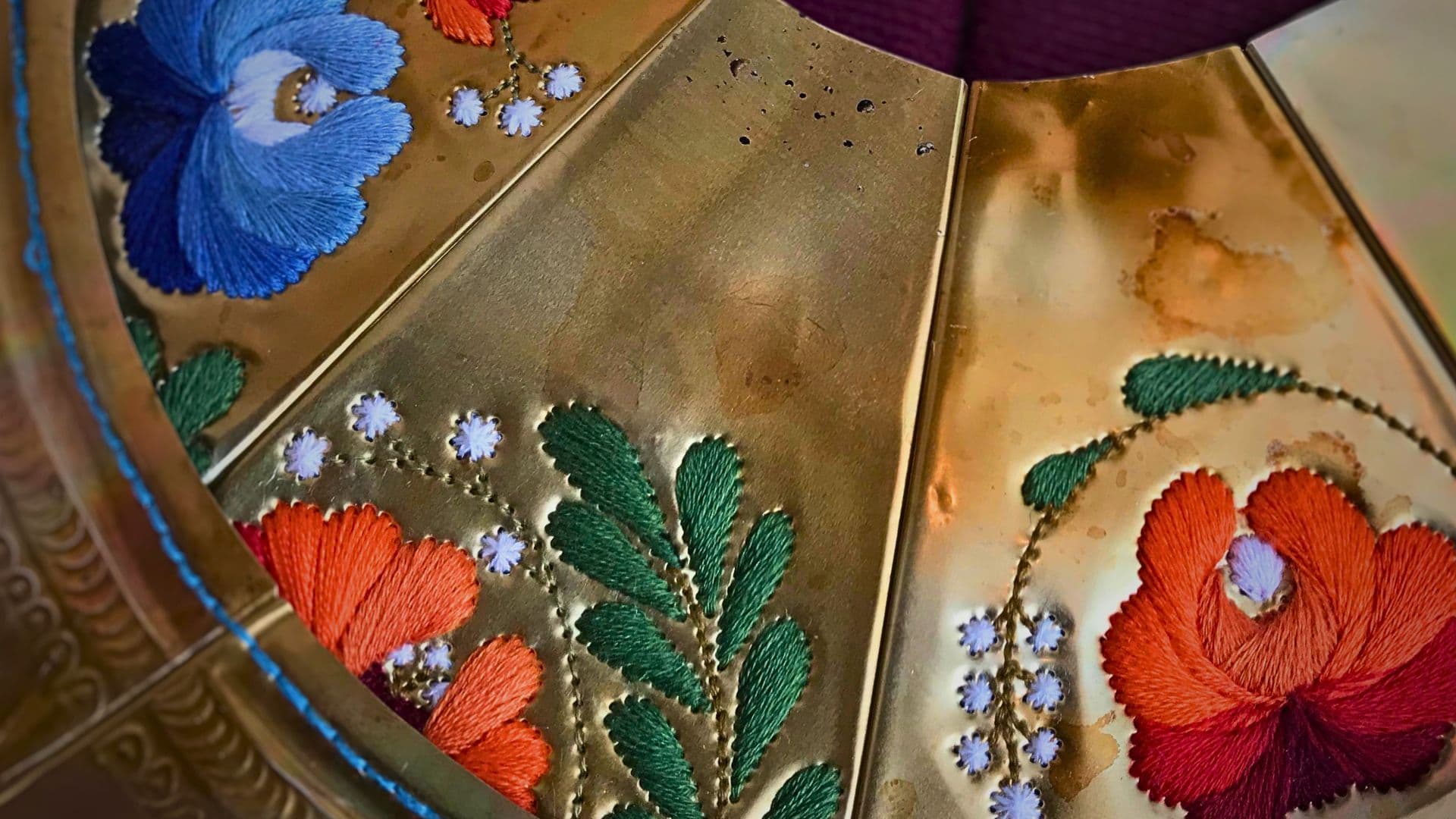
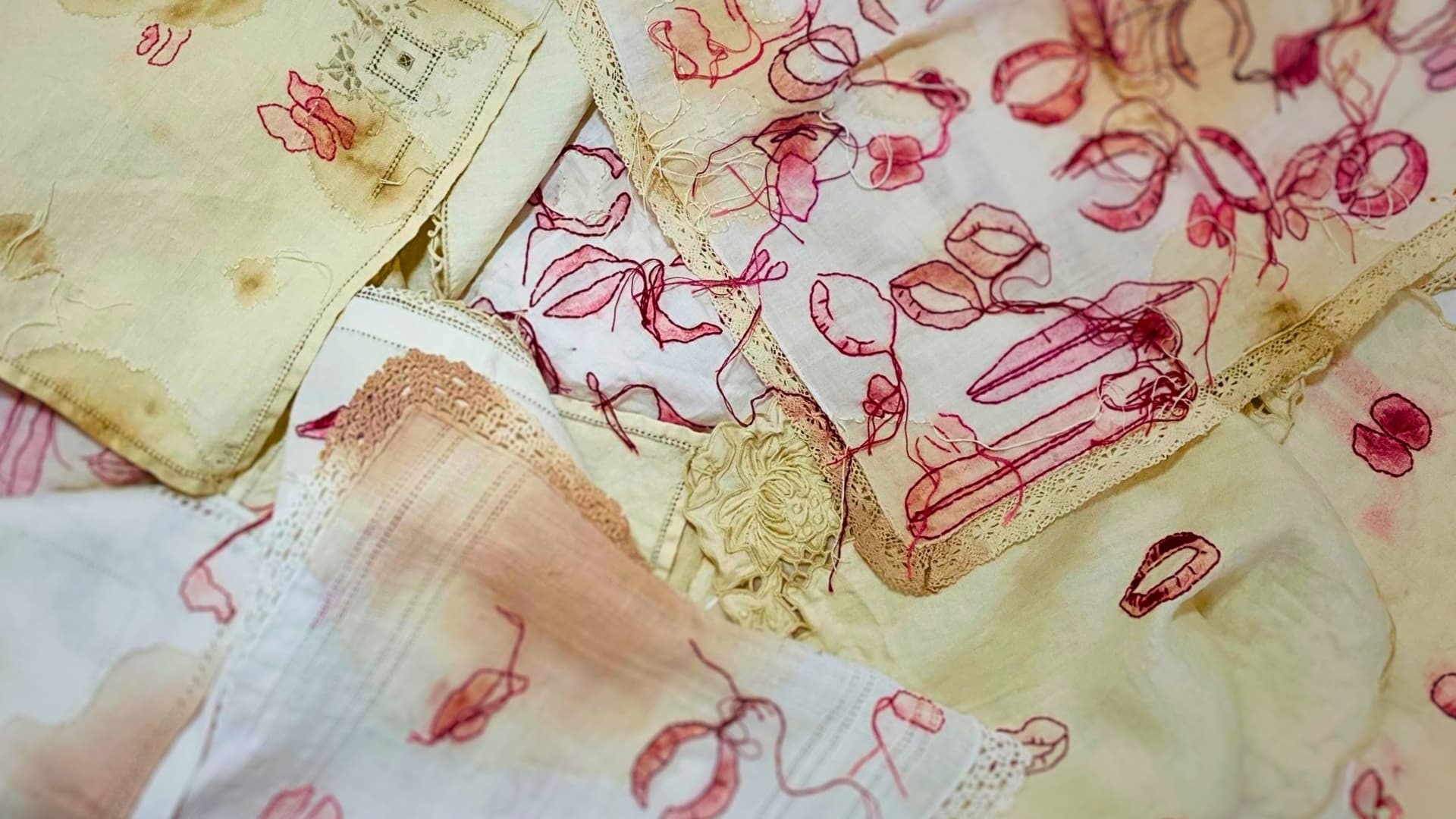
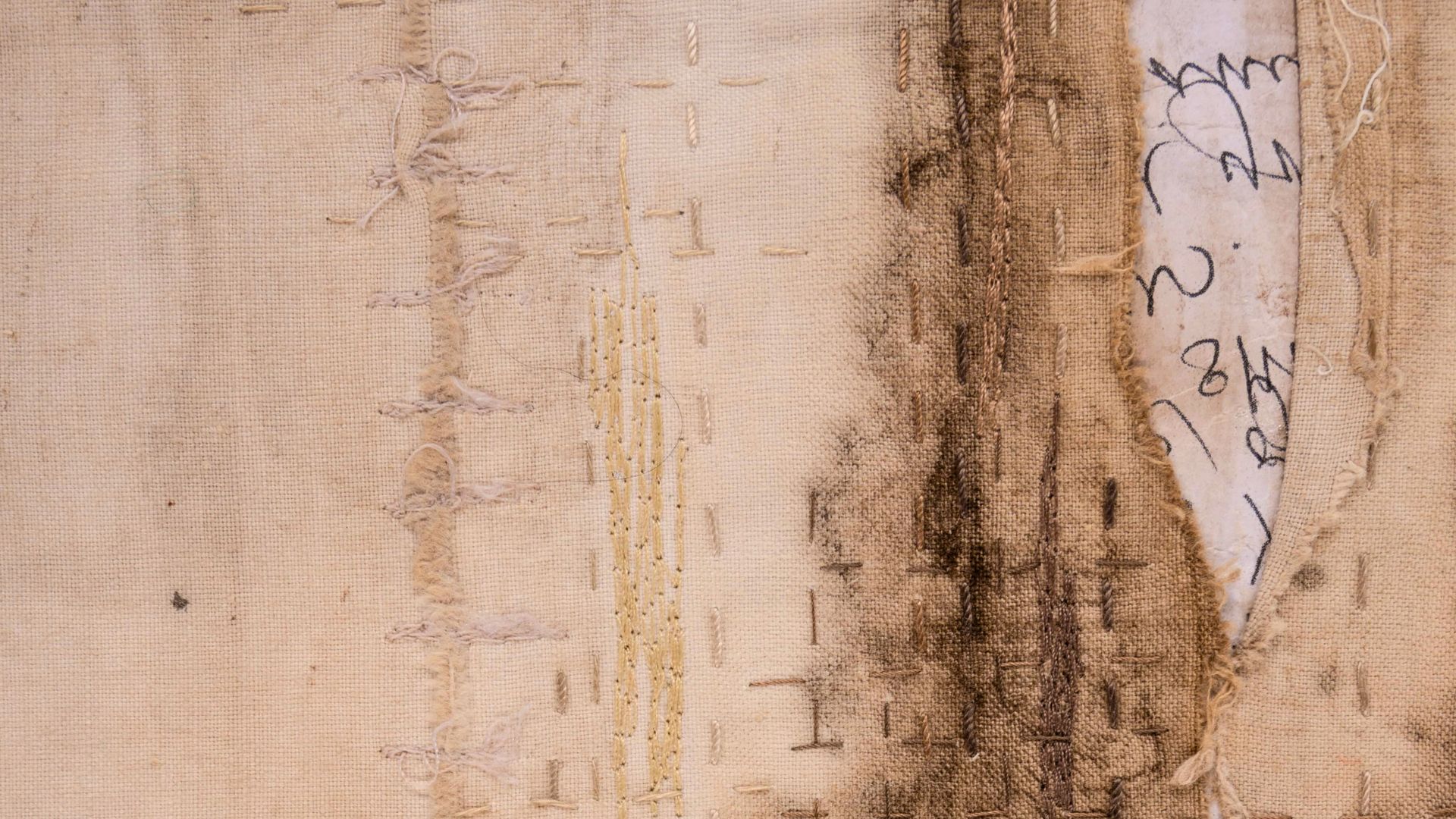
8 comments
Mary Scharosch
Blurring boundaries, that is what fiber art should be. Thank you for this marvelous thought – exactly right.
Julie French
It’s exactly how it should be, thank you Mary
Susanne C Scott
Love the color and use of texture!
Julie French
Thank you Susanne
Lyn
Lovely work. And good to see textile art displayed along side fine art.
Julie French
Thank you Lyn
Carol K Boyer
This is wonderful. I like her approach and see some of the same crazy ideas in my own work. Thanks for expanding my world.
Julie French
Thank you Carol